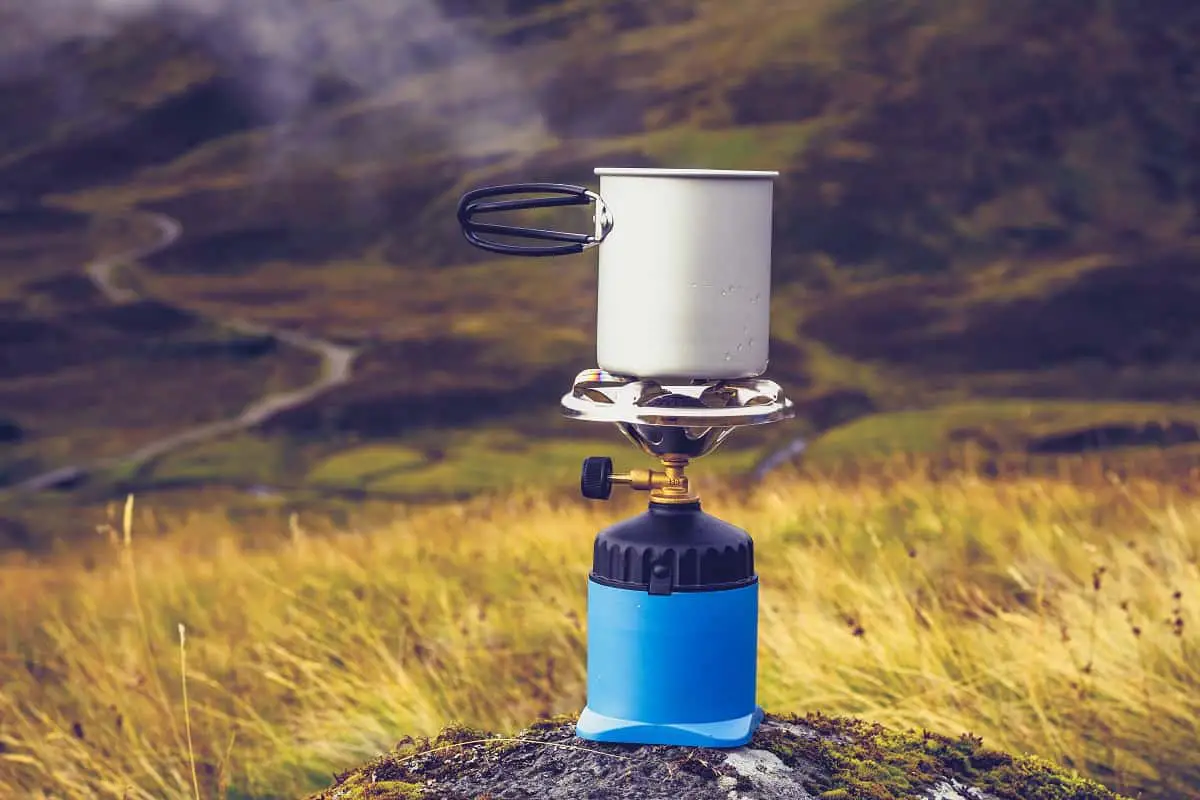Last Updated on June 14, 2022 by Ecorf
Depending on the nature of your trip you should never omit food on your itinerary. If you are going to be out for a few days, then you must have a backpacking stove. To enjoy your camping to the fullest, you should not restrict yourself to prepared food. You can also enjoy warm meals that you can cook as long as you have the right equipment like a stove.
There are different types of lightweight cooking stove and they suit different occasions. This article gives you information about the things that you should know about these lightweight cooking stoves.
Table of Contents
What Are the Common Types of Lightweight Cooking Stoves?
There are different types of lightweight cooking stoves that you can choose. One thing you should know is that the type of each stove is determined by the type of fuel that it uses. You should know that the choice of fuel affects your stove selection. There are mainly four types of fuel options that can help you to determine the right type of portable stove that you can get for your trip.
These types of fuel include the following: gas canister, biofuel, alcohol, and liquid fuel which can include petrol, paraffin as well as white fuel. However, not each type of fuel is suitable for every destination so you should make a wise decision.
Gas Canister
A good gas canister stove is usually ideal for most backpacking trips since it is easy to use and it is also fast. Gas canister stoves are advantageous in that they consist of adjustable flame which also helps to determine your cooking period. The stove is also quick to boil water or to cook a meal.
This type of stove can also withstand weather elements like the wind. However, you should take safety precautions when using this kind of stove since it can be dangerous if not properly handled.
Liquid Fuel
Liquid-fuel stoves are versatile and you can use it in different places even where you cannot get gas. The other advantage of a liquid fuel stove is that it is ideal for cooking large meals and it is good when you are camping as a group. The burner of liquid fuel is stable and the pot is less likely to fall compared to tiny burners of gas canisters.
However, the main issue with liquid fuel is that it produces fumes that can be toxic. It is not advisable to use this kind of stove in a small and enclosed place. The stove also produces black smoke which is sticky on the pots. The other challenge is that it can be easily extinguished by the wind which can make it difficult to use it under windy conditions.
Biofuel
A bio-fuel stove is another good option that you can consider if you do not want to bother yourself with carrying fuel. This collapsible wood option is a great choice for many backpackers since it is easy to carry from place to place. No extra burden of carrying fuel.
However, you may not be able to use this type of stove in places where fires are prohibited. The other issue is that if you cannot get wood, then you are not going to cook. For example, if you are on a ski tour in an area that is characterized by snow, then you should count the wood stoves out.
Alcohol
Alcohol is the other type of fuel that you can use in your light cooking stove. The main advantage of alcohol is that it is cheap and it is readily available in different places. You can even make your alcohol in the event that you run out of fuel. However, the major drawback of alcohol powered stove is that it is grossly inefficient. It might not be a good fit if you are backpacking.
Safety Tips about Using your Lightweight Cooking Stove
Though convenient a lightweight cooking stove can be dangerous if not properly handled. You would not love it to be a victim of a fire explosion from your stove while you are supposed to be enjoying your retreat. Therefore, to avoid such unfortunate scenarios, the following safety tips can be helpful.
- When you are camping in a hot environment, avoid cooking inside your tent. There is a risk of carbon monoxide from white fuel cookers. This also helps you to prevent accidental fire outbreaks inside your tent.
- When lighting a stove, always be careful to avoid burning your fingers
- Spare fuel should be kept away from the cooking area.
- Make sure that your tent has proper ventilation when you decide to cook inside it.
- Remove all loose clothes away from the cooking area.
- In case of unprecedented fire inside your tent, quickly throw the cooker out instead of trying to put off the fire. You should also throw fuel away from the tent then safely evacuate.
- You must keep a blanket or flame guard close to you
- You must not refuel your stove inside the tent since this is dangerous. Always make sure that you perform this task outside and away from the naked flame.
- The temperature might be biting but you should avoid the temptation of using your camping stove as a heater inside your tent. Rather use an extra cover or sleeping back to make yourself warm instead of using your stove as a heater.
- Before sleeping, make sure the fire is completely out.
Conclusion
There are many benefits that you can derive from using lightweight cooking stoves during your camping trip. When choosing a lightweight stove, you should know that factors such as destination together with the type of fuel it uses help you to choose the right thing. You should always prioritize your safety by taking precautionary measures when using a lightweight stove.
I hope you have enjoyed reading this informative article and you will make informed decisions when you plan your next trip. You can leave your comments and questions below.



